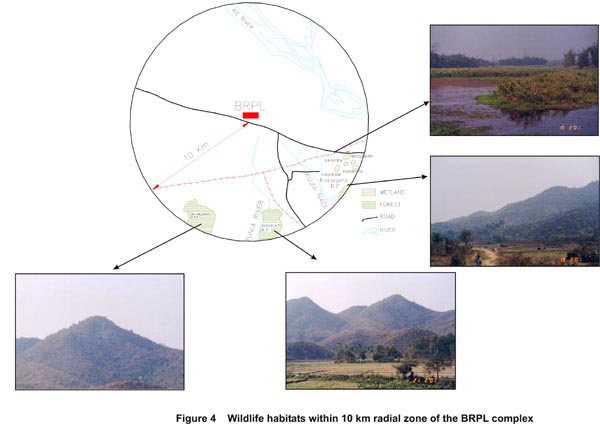Identification Of Ecosystem Components Within The Study Area
|
The need to restrict the range of ecosystem components (habitats, species or important ecological processes) is necessary to refine the scope of ecological assessment as it is never possible to study all components. It is important to identified valued ecosystem to provide a focal point for ecological evaluation. This involves a form of evaluation relates not to the significance of impacts but to the perceived value of receptors. Various attributes have been suggested for consideration in focusing (Turnbull 1992 and Treweek 1999) phase of the study. Some of these attributes are:-
Based on the criteria mentioned above, the area identified for ecological assessment within 10 km radius of the project have been defined and summarized in Table 4 & Fig. 4. Table 4. Ecological Area Identified within the 10 km radial Zone
Each of the above selected sites (ecological area) was extensively surveyed in February 1997 to generate ecological baseline for the earlier conducted floral/faunal assessment for the BRPL's hydro treatment plant (WII 1997). The ecological areas surveyed earlier were revisited during the field trip for this assignment for collecting additional information on the ecological attributes of the natural environment to supplement earlier information on the ecology of the area. Existing information on landuse, vegetation structure, direct and indirect evidences, existing sources of biotic pressures and threat factors was further updates by recent direct observations in the field and consultation with local people and officials of the State forest Department during the field trip. Efforts to collect adequate field based information however remained constrained on account of insurgency that greatly limited our movements in the study area. Some gaps in the information could be overcome by reference of faunal checklist and field notes prepared by the naturalist of the Nature's Foster, a very dedicated nature conservation NGO working actively for the conservation of biodiversity of this region.
|
Last Updated: September 28, 2015










